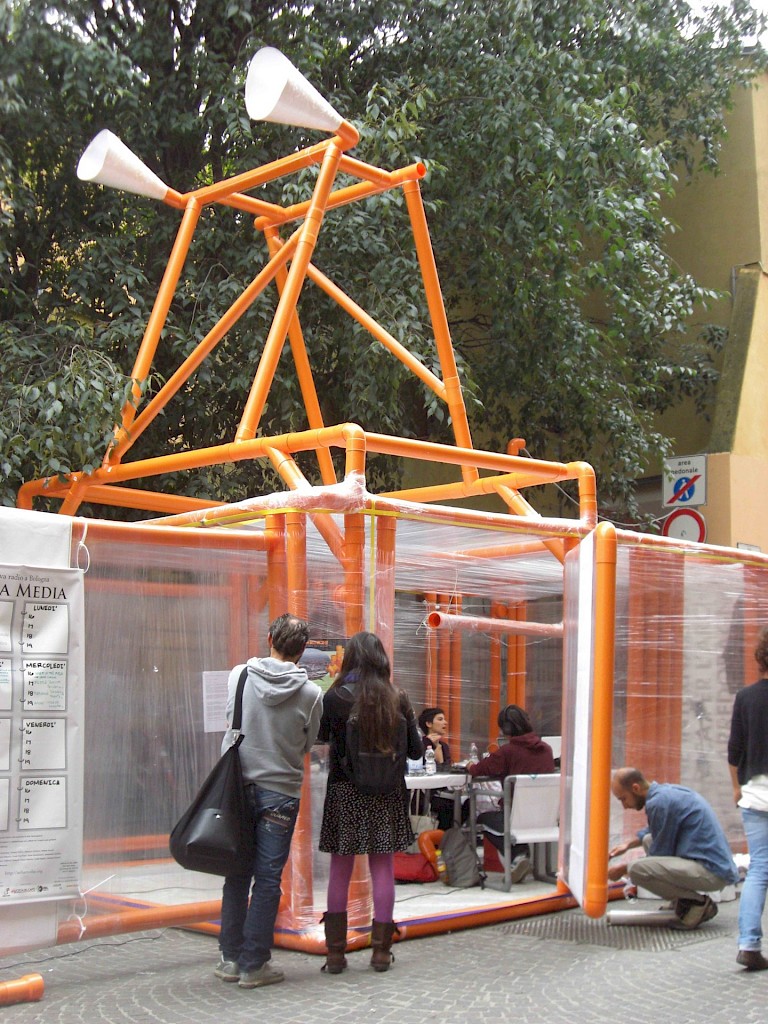



On the day of Ælia Media’s opening in Piazza del Puntone (Puntone Square), a protest by 15,000 indignados (organized in Rome against the power of banks and financial politics) had been transformed by Black Blocs into an urban guerilla protest. This quickly led to the National Police’s arrival in the name of public security and social control. The first special laws against protests were approved in the mid-1970s during the so-called “Years of Lead,” years of armed struggle and political terrorism, that ended in 1980 with the Bologna Massacre at a railway station by neo-fascists (which many citizens still consider to be an unsolved case). During that time Bologna, which hosts the oldest Western university attended by hundreds of foreign students, saw the birth of an important tradition of alternative radio as well as satirical, critical, and grassroots thinking in the region.
First Helguera did a deep investigation of the current local social and cultural issues by meeting with a remarkable number of independent artists in order to understand how to facilitate dialogue about common issues and the current social-political role of art and media. Ælia Media was organized as an alternative multimedia channel that aimed to revitalize past creativity and share knowledge of the 1970s among foreigners and new citizens. At the same time it supported emergent and experimental artistic ideas, provided technical skills for media production, and created an archive of dialogues between the arts community and social activists.
The Ælia Media live transmissions were broadcast from a transparent mobile structure conceived as a “third place,” which could encourage collective growth, in collaboration with the main local independent radio stations Radio Cittá Fujiko, Radio Cittá del Capo, and Radio Kairós, which remained after the dismantling in 1977 of the most important station, the guerrilla station Radio Alice. Its critique of mass media through satirical approach is, according to Helguera, comparable to Situationists and Futurists, from which the famous Italian expression “fantasy will destroy power and a laughter will bury you” was derived.
The name “Ælia Media” refers both to Aelia Laelia Crispis, a famous cryptic epigraph of the 16th century that has been known as “the stone of Bologna,” likely devoted to a dead loved one and the object of decodification studies; and to the name “Radio Alice” as its contemporary transposition, by creating an ancestral connection between the unsolved mystery, the creative past, and the art engagement of the present.
By referring to the Italian media’s paradoxical situation, Ælia Media was both a response to the state of Italian democracy and to the local current social and cultural need for the creation of art as independent space, where, according with Helguera, we can pretend, play, and rethink things.
All copyright belongs to Shanghai Academy of Fine Arts, Shanghai University.



